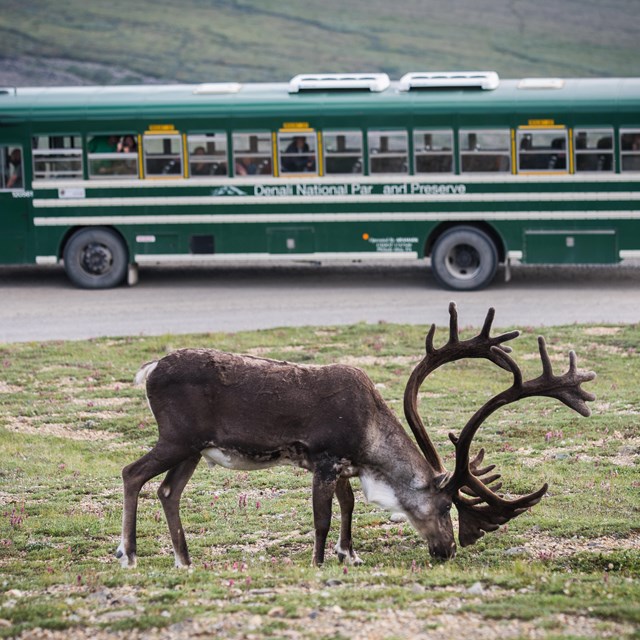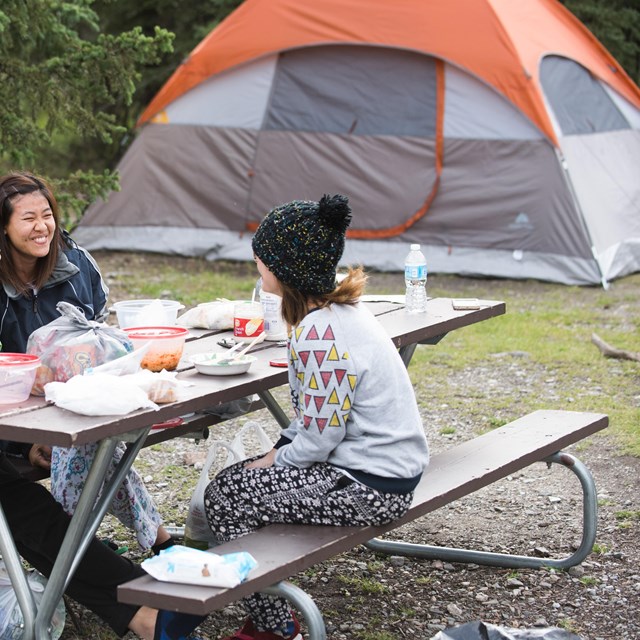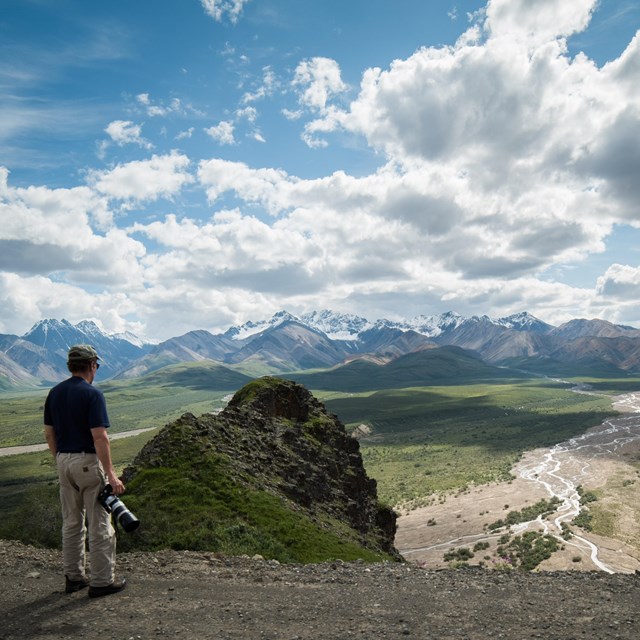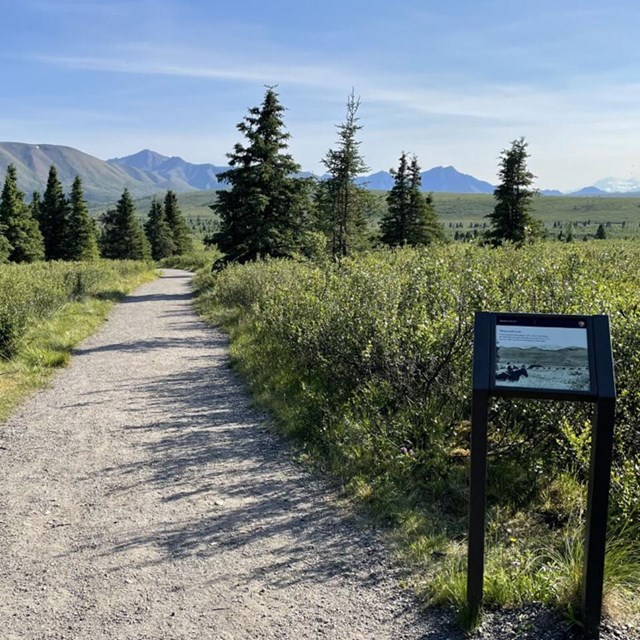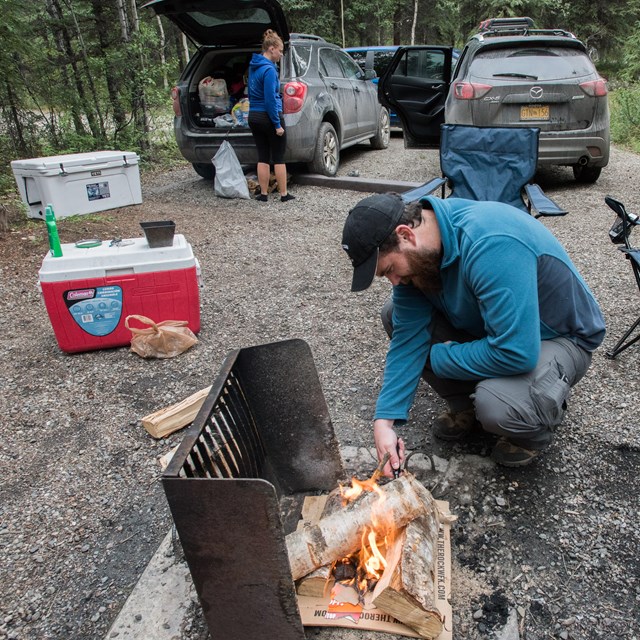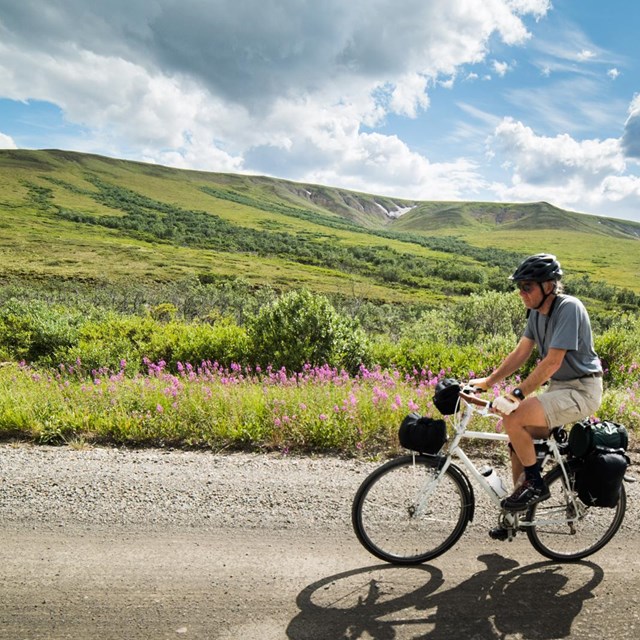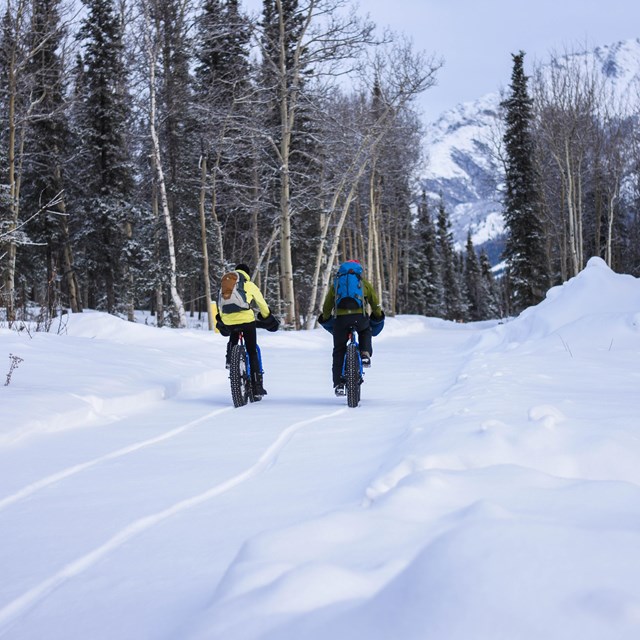|
Denali is open year-round, though facilities and services are more limited in winter than in summer.
Visitor Center and Campground Operating Hours and DatesSome visitor centers and campgrounds are only open in summer. In winter, only the Winter Visitor Center and Riley Creek Campground are open. Use the links below for more details.
Visitor Centers in Denali
Learn about visitor centers in Denali. 
Campgrounds
With six different campgrounds, there are plenty of options for you to camp in Denali with a tent or an RV. Summer: May 20 through mid-SeptemberSummer is the main visiting season. Summer bus service begins May 20 each year and transit buses operate through the second week after Labor Day (exact date varies). Sightseeing by bus on the Denali Park Road is the most popular activity in summer.
Spring and FallSpring: April to May 19The spring season in any year is dictated by weather. In a typical year, the road is plowed and visitors can drive up to 30 miles into the park by late April. However, heavy snow can fall in April, so vehicle access in the park is variable until warmer weather arrives in May. There are typically no ranger-led programs until May 15, so the main activity during an April or early May visit is sightseeing along as much of the road as weather allows you to drive. Contact us in spring to learn more or follow our spring road opening updates. Fall: Mid-September, until snow accumulatesTransit bus service along the Denali Park Road ends the second Thursday after the Labor Day holiday each year, and the fall season begins. When buses are running, private vehicles may drive as far as Savage River (mile 15). After bus service ends, the park road opens to Teklanika River (mile 30) for all private vehicle traffic. The road will remain open, weather permitting, until October 15 or when snow or ice closes the road at Park Headquarters (mile 3.4) to vehicles, whichever happens earlier. After October 15, weather permitting, the road will be open to public vehicle traffic as far as the Mountain Vista Rest Area (mile 12) until the weather closes the road at Park Headquarters for the winter. It is always a good idea to contact us in the fall to get an update on conditions before traveling to the park. Once snow closes the park road, winter has arrived.
Winter: September or October through AprilOnce significant snow falls, the road will close at Park Headquarters (mile 3) for the rest of the winter. While light snow may fall in July or August, true winter usually doesn't set in until September or October. At that point, winter activities become possible, like skiing and snowshoeing. The Winter Visitor Center is open daily (except Thanksgiving, Christmas, and New Year's Day). In February, plowing begins on the Denali Park Road and the road typically opens for visitors to drive to Mountain Vista (mile 13) by mid-February. This is a beautiful spot, with views of Mount McKinley during clear weather; but beware that rapid changes in weather can result in temporary closures back at Park Headquarters (mile 3).
Deciding When to VisitDenali is a land of extremes. Winters can be harsh, though starkly beautiful. Summers are short, packed full of intense activity for animals and humans alike. Spring is so brief that a matter of days can be the difference between hillsides looking drab and brown versus lush and green. Fall is equally brief, with tundra plants changing from green to brilliant reds and oranges, and then fading back to brown a week later. Whether you plan to visit in summer, winter or the "shoulder seasons" between the two, there are many adventures to be had here. For a visitor to Denali, the summer is when most services and activities are possible, and is when access into the park is easiest. The summer season runs from mid-May to mid-September each year. Mid-June to mid-August also sees the largest number of visitors to the park. Expect the land to turn from brown to green in just a few days, at the end of May or beginning of June—depending on how mild the weather is. Wildflowers begin to bloom in early June, and can be seen until late July. Most flowers have gone to seed by early August, making way for a variety of berries and fall colors. By early August, tundra plants at high elevation will change color first; brilliant reds, oranges and yellows march downhill into the valleys, where trees change color in turn by early September. By then, the mountains will be brown again, if not blanketed in fresh white snow. Wildlife is most active and visible from May to September, as they squeeze in as much living (and eating) as they can before the onset of another cold winter. Mosquitoes, too, are active in early summer, although by early August they have disappeared from all but the wettest parts of the park, like Wonder Lake. The days are also at their longest in summer, with the solstice in late June offering over 20 hours of daylight. The summer sun provides so much light, the Aurora Borealis isn't seen until late August. As daylight hours rapidly decrease in the fall, chances of seeing the northern lights increase. While snow can fall even in summer, snow that arrives in September tends to stay rather than melt away. Winter announces its arrival not just with snow, but with extreme temperatures and diminishing sunlight. Access into the park and services offered are limited between late September and late April, though self-sufficient folks will find plenty to do in winter. Temperatures can drop to -40°F (-40°C) and on the winter solstice—just before Christmas—the sun is above the horizon for less than four and a half hours. |
Last updated: January 29, 2025

